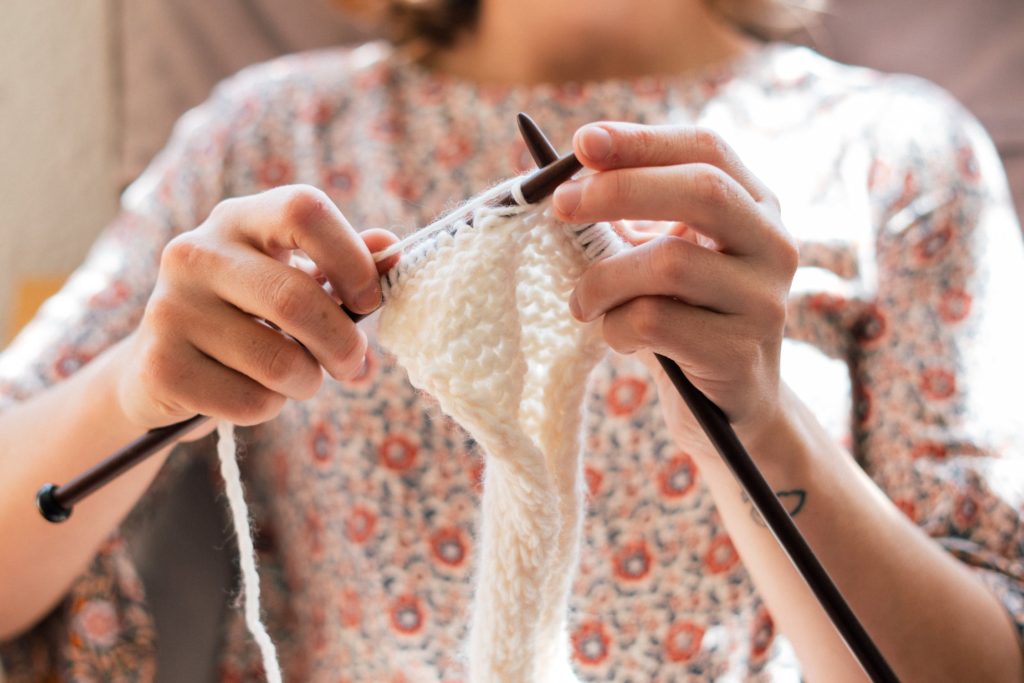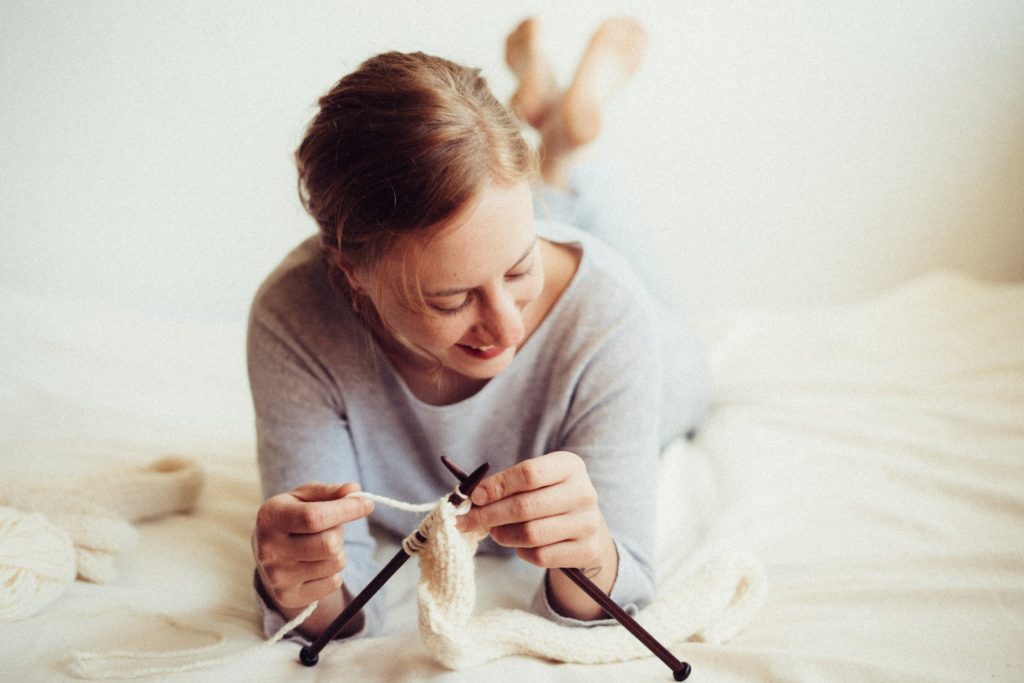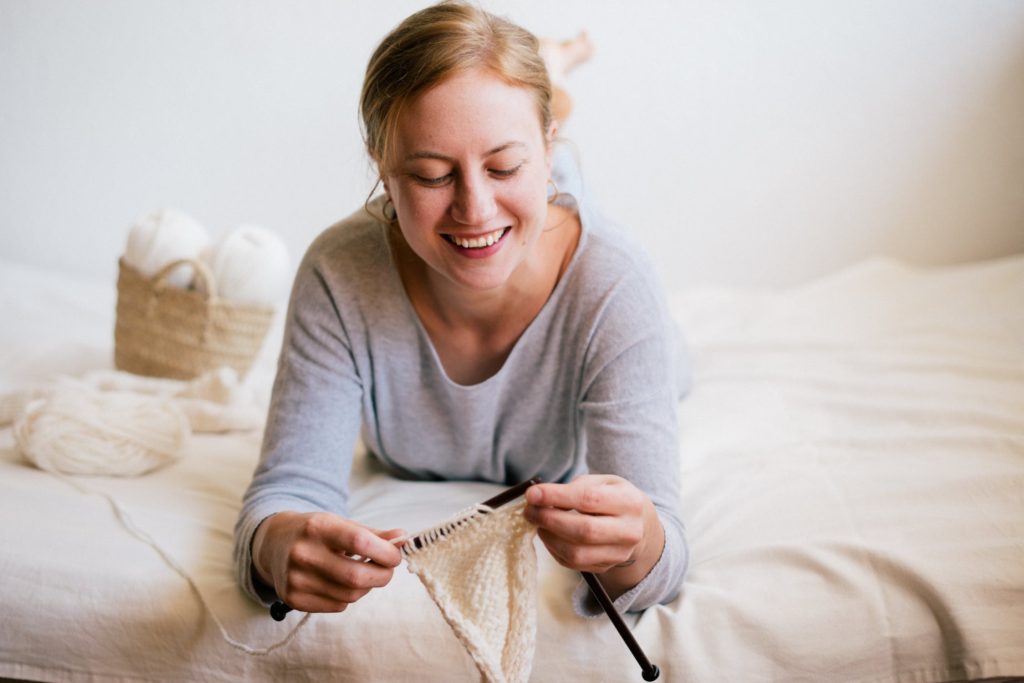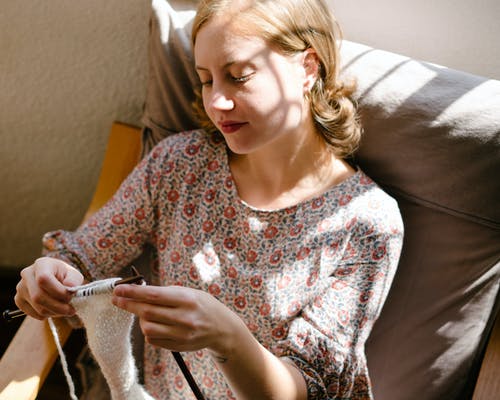
grapplingstars.com, femcompetitor.com, fciwomenswrestling.com, fcielitecompetitor.com fciwomenswrestling2.com articles, pexels.com-photo Fernando-Ramirez.
May 14, 2020,
Your grandmother would be proud to see you adopting her tradition.
Maybe it’s your great grandmother.
Desperate times calls for desperate measures.
Most businesses have been severely impacted by the coronavirus pandemic but one old past time that has been reborn is the participation in knitting.
Knitting is a method by which yarn is manipulated to create a textile or fabric, especially sweaters.

Having said that, it is used in many types of garments including mittens and head caps.
Depending upon your skill level and tastes, knitting may be done by hand or by machine.
If you are going to be inside for some time, and many of us are, then knitting may be a wonderful and productive activity for you and your family. Perhaps even start a new tradition with your children.
Others certainly are doing so.
As reported by forbes.com, “With time on their hands and anxiety rising, people – men, women and children – are turning to knitting. Since the coronavirus hit, global sales for We Are Knitters, a beloved brand known for its bagged kits and vibrant community, have been increasing more than 75% weekly.”

That news makes us feel warm all over.
The global news and information source nypost.com adds, “We Are Knitters, a Spain-based online seller of knitting supplies, has seen a 270 percent sales growth from the United States since March — with New York (+300 percent) and Massachusetts (+375 percent) proving to be the most wool-obsessed states.”
What a wonderful pandemic yarn.

At their website, We Are Knitters extols, “An idea means nothing if it is not completed. We are always looking for new ideas, trends, and friends! Changing the world one stitch at a time.”
They certainly are, now becoming the fabric of our lives.
Here is another aspect to the knitting craze that we hadn’t thought about. The team at textileworld.com relate, “The Beverly Knits group of U.S. textile and garment manufacturers continues to work together to provide face masks for the U.S. Department of Health and Human Services.
Fabric is now in production in factories in North and South Carolina. The production goal is 200,000 masks during the first week and ramping up to 2 million masks produced per week shortly thereafter.”
One of the large life lessons that has been sewn into history is that when you do what you love, it is as though you never work another day in your life.
How much do you like to knit?
If you like it a lot, have you ever thought about starting a home based knitting business? Many have.
We have a visiting female expert who weaves an insightful tail about that very cozy pursuit.
Liz Raad is a small business coach and author of the exciting new E-book “Knitting For Profit – Your Step-by-Step Guide To Making Money From Knitting and Crochet”.
Liz also runs a popular blog on the topic of making money from knitting and crochet. Visit her blog where you will find tons of free information, practical advice and ideas about how to successfully knit or crochet for profit.
On her blog you will discover: -How to get started in your own knitting business -How to easily sell your knitting and crochet online -Copyright free knitting patterns that you are free to knit for your own profit -Real success stories and interviews with women who make cash from their favorite hobby -How much to charge for a knitting job -Advice on making money with knitting websites.
Sounds interesting to you? Please read on.
Knitting For Profit – How Much to Charge For Your Knitting Jobs

If you are just starting out in the world of knitting, you may not be worried about doing it professionally or trying to make a living at it… just yet at least. However, chances are pretty good that you have seen other people making money with their knitting and you know it can be done and have at least considered the possibility of knitting for profit. This article will take you through some of the most basic necessities to help you figure out how much to charge for your knitting jobs.
The first thing that you need to seriously consider when you are thinking about knitting for profit is exactly how much you believe that your time is worth. This figure may actually vary depending on your clients and who they are in relation to you and your family but regardless of that fact, your time is the most valuable commodity that you have. If you are doing professional knitting jobs for outside clients, your rates may go up and if you are knitting professionally for your friends and family, your prices may go down. Still, this will remain the primary factor that you need to take into consideration when you are trying to figure out how to charge when knitting for profit.
Professional knitting also requires that you take into consideration your personal production levels. How much can you actually get done if you are knitting for a set period every day? Knitting is a very personal craft and one that varies greatly among those who practice it. Can you produce enough work in ten hours to justify charging the rates that you have set for your time? Can you produce enough professional quality knitting in a week to pay for your bills? That may be a secondary concern when you are first venturing into professional knitting for profit but it will become increasingly important as your customer base increases.
After you have looked at these two factors and decided that professional knitting for profit may be a viable option for you, you will need to answer a series of question regarding each and every knitting project that you consider. Put the answer to these questions down in writing in order to make certain that your customer knows that you are an honest business person and also to minimize the risk of dispute regarding your professional knitted products.
– What is the cost of materials for this knitting project? – If the materials have been provided for you, are they new or old materials? – Are there any subtle differences that may affect the outcome of your professional knitting work? – How long will it take you to finish this particular knitting pattern? – What is the expected time frame for completing the knitting project?
The first question is definitely relevant if you are purchasing all new materials for your knitting project. The second question is especially helpful if you are practicing “waste utilization” and using the scraps of yarn out of deep in the back of your closet just to get rid of them. (If you are stashing bits and pieces of yarn in the closet when you finish your knitting projects, these stashed knitting material remnants can still be great for many projects)
Some of the yarns will differ depending on the dye used to taint them, how they were dried, the manufacturer and many other factors. Professional knitting requires that there be as little variation as possible in the yarn and preferably none at all. If you have knitted similar patterns, it will help you to “guesstimate” your time. Check with your client that you are contracting out knitting work for and make certain that this time frame is acceptable to them.
Finally, put everything down in writing and have your client sign it right next to your signature. When you want to figure out how much to charge for your knitting jobs, follow these simple guidelines and you should not have any difficulties at all.

~ ~ ~
OPENING PHOTO grapplingstars.com, femcompetitor.com, fciwomenswrestling.com, fcielitecompetitor.com fciwomenswrestling2.com articles, pexels.com-photo Fernando-Ramirez.
Article Source: http://EzineArticles.com/3046664
https://ezinearticles.com/?Knitting-For-Profit—How-Much-to-Charge-For-Your-Knitting-Jobs&id=3046664
https://en.wikipedia.org/wiki/Knitting
https://nypost.com/2020/05/08/the-surprising-businesses-getting-a-bump-from-the-coronavirus/



